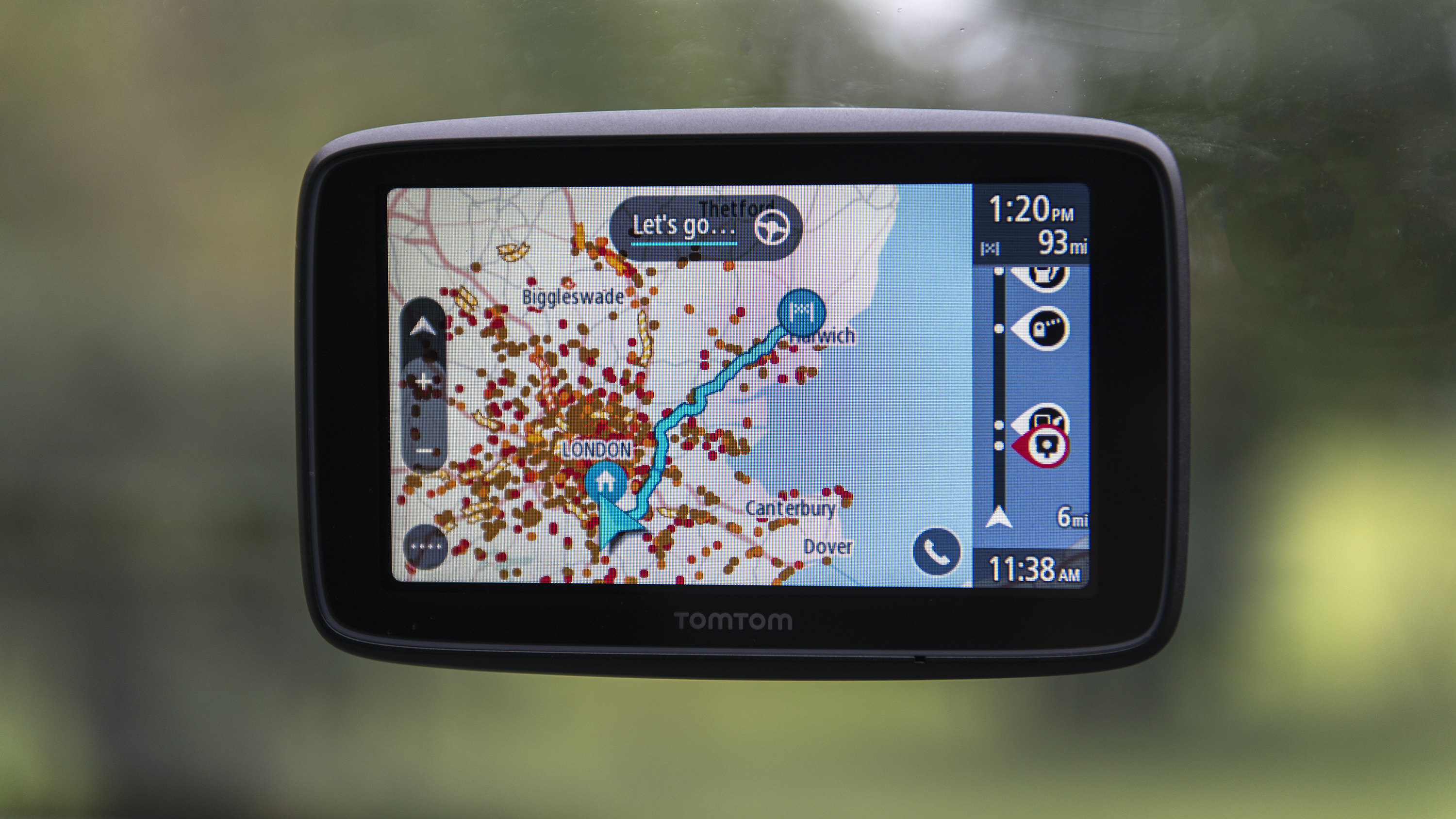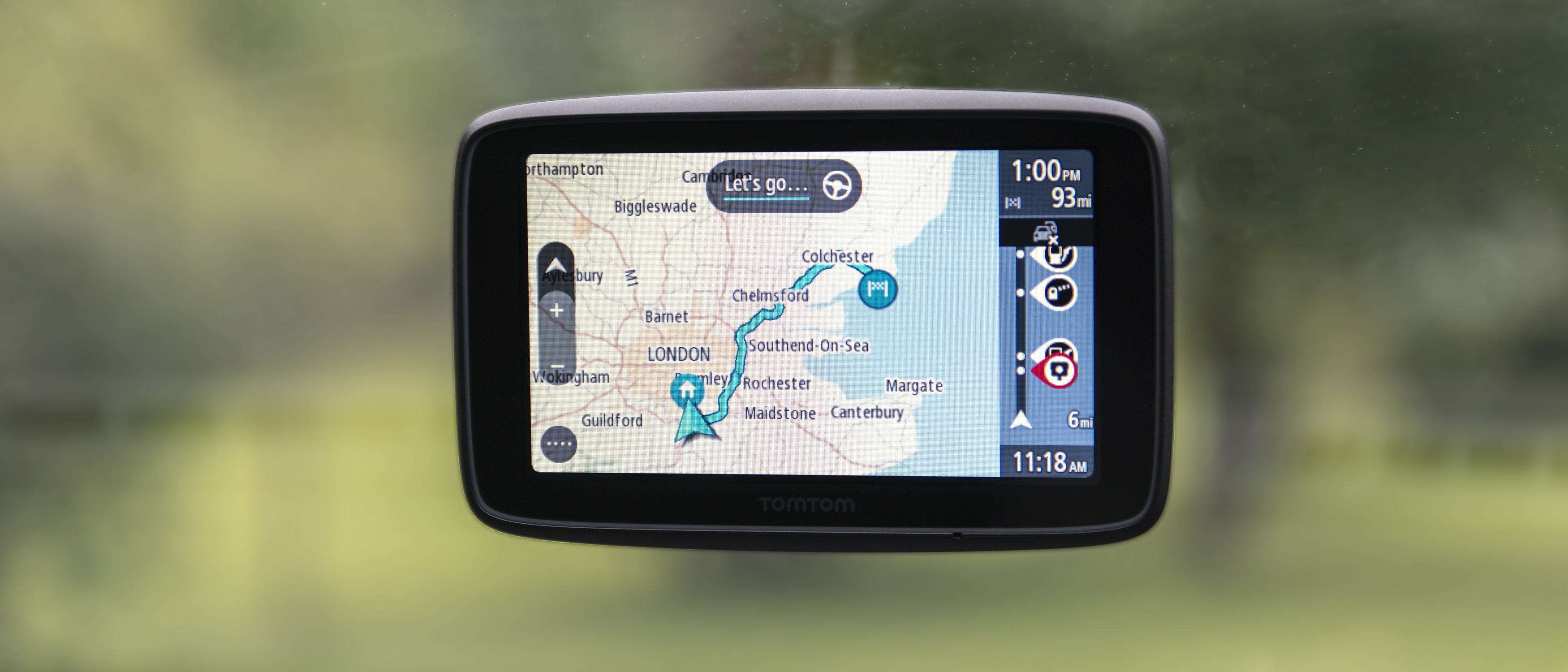TechRadar Verdict
Easy to use with a decent touchscreen and connectivity options, the TomTom Via 53 doesn't disappoint for the price.
Pros
- +
Easy to use
- +
Excellent mapping
- +
Live traffic updates
- +
Hands-free calling and text messaging
- +
Voice control
Cons
- -
Only around an hour of battery life
- -
Slow to boot up
- -
Chunky design
Why you can trust TechRadar
The essential review
This is TechRadar’s review summary that gives you all the key information you need if you’re looking for quick buying advice in 30 seconds – our full, in-depth review follows.
TomTom's Via 53 sits in the mid-range category of sat navs, offering a host of connectivity options via a Bluetooth connection with your smartphone.
This means you can get live traffic updates, enabling you to adjust your route depending on the traffic ahead, while you can also take advantage of hands-free calls and have your text messages read out.
The mapping is very good, while the clean user interface, voice control and a 5-inch touchscreen that requires light gestures makes it a breeze to use.
The design might be a little subdued, and the one-hour battery life disappointing, but those issues aside the Via 53 well is a well-specced and connected sat nav that comes at a good price.
Who's it for and should I buy it?
If you like the idea of a connected sat nav but don't want to break the bank on a premium model with built-in data connection, the Via 53 could be for you.
Thanks to Wi-Fi connectivity for computer-free updates and Bluetooth connection to your smartphone, you get pretty much all the benefits of a far pricier model, but without the cost – just don't forget to bring your smartphone.
Sign up for breaking news, reviews, opinion, top tech deals, and more.
TomTom Via 53 price
- Current price: £179.99
Connected and hands-free
- 5-inch display
- Siri and Google Now compatible
- Hands-free calling
5-inch display
Lifetime maps
Lifetime TomTom traffic
Updates via Wi-Fi
Smartphone messages
Hands-free calling
16GB internal memory
Aside from a 5-inch display, what else does the TomTom Via 53 have to offer? You get lifetime maps for starters, meaning your Via 53 won't get caught out when the road layout changes, with Wi-Fi connectivity enabling you to update your device without the need to connect to a computer. And those maps cover 45 European countries, so even when you're abroad, the Via 53 will take into account any road layout changes to plot the best route for you.
While the Via 53 doesn't have its own data connection built-in like the pricier TomTom Go models, it can connect to your smartphone via Bluetooth, and once you've downloaded the MyDrive app this opens up a wealth of options. There are live traffic notifications for a start, while the MyDrive app lets you plan routes in advance via the desktop interface and send these to the Via 53. There are also speed camera updates, although this service is only free for the first three months – it'll cost you £19.99 a year after that.
You shouldn't have to worry about the Via 53 eating into your smartphone's data allowance each month either, as TomTom reckons you should only use up around 7MB of data a month if you use it every day for an hour.
The Via 53 sports voice activation control, while it's also compatible with Siri and Google Now using the device's built-in microphone, so you can still get access to your smart assistant should you not be able to live without it on your drive. You can make hands-free calls, and get the Via 53 to read out incoming text messages, avoiding any distractions and illegal glances at your phone.







Clean and functional design
- Capacitive touchscreen
- Only needs light gestures to control
- Reversible mount
The TomTom Via 53's 5-inch display is a good balance between offering a decent amount of real estate and not being so large that it dominates your dash.
Compared to your smartphone the resolution isn't going to win any prizes at a modest 480 x 272 pixels, although you're only going to be looking at maps on this screen, not binge-watching Netflix. And we didn't have any problems with the brightness – even in bright sunlight we could see the display clearly.
Another plus is that, unlike the more affordable Via 52, the Via 53 uses capacitive rather than resistive touchscreen control. This means that rather than having to apply tangible pressure to the screen to interact with the sat nav, lighter swipes and gestures are the order of the day, much like on your smartphone.
If you were expecting something nice and slim, you're going to be disappointed
While the overall design is pretty clean, the TomTom Via 53 is quite bulbous – if you were expecting something nice and slim you're going to be disappointed. With the exception of the front screen, the exterior is made from plastic, while a reversible mount, allows you to mount it on your dash or windscreen.
It's easy to swap the mount around, but the suction cup wouldn't stick to our textured dash, so we had to resort to the less-preferable screen option, and on a couple of occasions there was a loud clang as the Via 53 came away from the screen while we were driving – you really need to jam it on.
On the road
- Easy to use
- Voice control has limited phrases
- Poor battery life
The TomTom Via 53 is slow to boot up at first, but once it's on it performs very well. The user interface is clean and clearly marked, making it easy to get started, and to read when you're on the move. As we've found on other TomTom models, the neat right-hand bar that displays cameras and petrol stations works well, leaving the mapping nicely clutter-free.
The mapping is certainly one of the Via 53's strong points – it's polished and finds places reliably, while there are a number of route-planning options available; we opted for the quickest option most of the time, but if you're constantly looking at your average mpg reading there's a handy Eco mode (although in most cases this seemed to also select the quickest option).
Connecting to the MyDrive app is nice and straightforward, with the live traffic information coming in really handy on a couple of trips we took.
When using voice control you're restricted to limited phrases that the Via 53 offers up at each step, but don't let that put you off – it works very well, and saves you having to play around with the screen as you're driving. To activate this mode you just need to say 'Hello TomTom'.
Perhaps our only major gripe with the Via 53 is the poor battery life of around an hour – if you need to use it for any longer you'll have to plug the unnecessarily long lead into the cigarette lighter or USB socket of your car.
Not convinced? Try these...
If the Via 53 isn’t for you, then we’ve picked three excellent choices for you to consider instead.

TomTom Via 52
Just below the Via 53 in the TomTom range is, you've guessed it, the Via 52. It shares a similar design and screen size, but it lacks a number of connectivity options, while the display is resistive rather than capacitive, requiring tangible pressure to make changes.

Garmin DriveSmart 51 LMT-D
Garmin's DriveSmart 51 LMT-D sports a 5-inch display and comes with a full set of European maps that can be updated via Wi-Fi. There's also Bluetooth hands-free calling, voice-activated navigation and onscreen smart notifications (calls, texts and other app alerts).

Phil Hall is an experienced writer and editor having worked on some of the largest photography magazines in the UK, and now edit the photography channel of TechRadar, the UK's biggest tech website and one of the largest in the world. He has also worked on numerous commercial projects, including working with manufacturers like Nikon and Fujifilm on bespoke printed and online camera guides, as well as writing technique blogs and copy for the John Lewis Technology guide.
